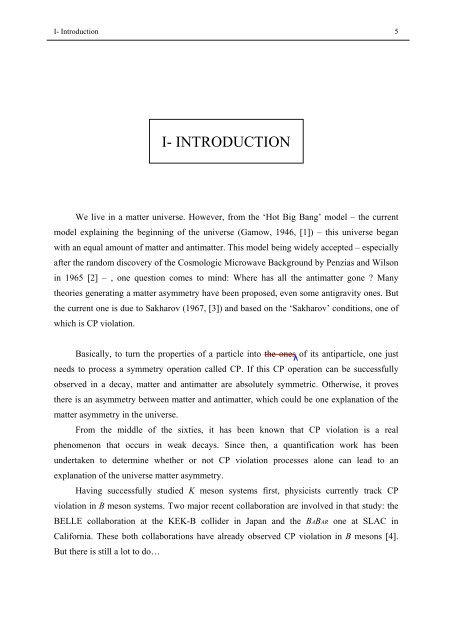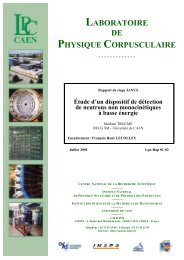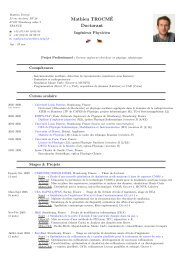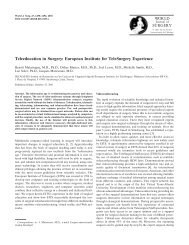Rare B meson decays - mathieu trocmé
Rare B meson decays - mathieu trocmé
Rare B meson decays - mathieu trocmé
Create successful ePaper yourself
Turn your PDF publications into a flip-book with our unique Google optimized e-Paper software.
I- Introduction 5<br />
I- INTRODUCTION<br />
We live in a matter universe. However, from the ‘Hot Big Bang’ model – the current<br />
model explaining the beginning of the universe (Gamow, 1946, [1]) – this universe began<br />
with an equal amount of matter and antimatter. This model being widely accepted – especially<br />
after the random discovery of the Cosmologic Microwave Background by Penzias and Wilson<br />
in 1965 [2] – , one question comes to mind: Where has all the antimatter gone ? Many<br />
theories generating a matter asymmetry have been proposed, even some antigravity ones. But<br />
the current one is due to Sakharov (1967, [3]) and based on the ‘Sakharov’ conditions, one of<br />
which is CP violation.<br />
Basically, to turn the properties of a particle into the ones of its antiparticle, one just<br />
needs to process a symmetry operation called CP. If this CP operation can be successfully<br />
observed in a decay, matter and antimatter are absolutely symmetric. Otherwise, it proves<br />
there is an asymmetry between matter and antimatter, which could be one explanation of the<br />
matter asymmetry in the universe.<br />
From the middle of the sixties, it has been known that CP violation is a real<br />
phenomenon that occurs in weak <strong>decays</strong>. Since then, a quantification work has been<br />
undertaken to determine whether or not CP violation processes alone can lead to an<br />
explanation of the universe matter asymmetry.<br />
Having successfully studied K <strong>meson</strong> systems first, physicists currently track CP<br />
violation in B <strong>meson</strong> systems. Two major recent collaboration are involved in that study: the<br />
BELLE collaboration at the KEK-B collider in Japan and the BABAR one at SLAC in<br />
California. These both collaborations have already observed CP violation in B <strong>meson</strong>s [4].<br />
But there is still a lot to do…






